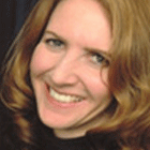It wasn’t your average academic conference. When about 450 students from The King’s University College in Edmonton attended their school’s interdisciplinary conference, “Truth and Reconciliation: Healing the Legacy of Residential Schools,” on Jan. 21 and 22, they got a lot more than textbook lectures about history.
Survivors came to meet the students and talk with them about the abuse and losses they suffered at the schools. Church leaders spoke about their churches’ roles and responsibility running the schools and for the great harm done to native people. There was drumming, singing, praying and dancing, as well as anger, apologies, tears and hope.
The conference was spearheaded by Roy Berkenbosch, head of the interdisciplinary studies program and a social justice initiative at King’s. “We made a decision that this conference would be about the truth and reconciliation process, trying to understand the experience of residential schools and trying to find our place in the work that needs to be done in order to bring reconciliation and healing to all our communities,” he said.
In addition to the numerous native speakers, students from Blue Quills First Nations College in St. Paul, Alta., were also invited to attend the conference and share meals with King’s students in order for the students from each school to get to know one another. The point that all Canadians have a role to play in reconciliation was made throughout the conference.
Maggie Hodgson, an educator who has worked on justice and healing initiatives for many years, told the crowd that she has been asked by many people why the National Day of Healing and Reconciliation, which she founded, isn’t held on the same day as National Aboriginal Day. “I said because reconciliation is not an aboriginal issue; it is a Canadian issue. It is your history and it is our history.”
Anglican Bishop Mark MacDonald, the church’s first national indigenous bishop, noted that “the church as been very good at telling the government to live up to the treaties…. [But] it has been very poor at understanding what the treaties say about indigenous peoples; that they are people, that they have authority, that they have a right to self-determination.”
Speaking at an evening gathering at the Canadian Native Friendship Centre, Chief Robert Joseph of the Gwa wa enuk First Nation, a survivor of residential schools, said he was full of hope. “I believe from this place, this evening, that reconciliation has already started for some of you,” he said.
“I never believed this 10 years ago. … At national dialogues, we gathered in forums like this of survivors, church representatives, government representatives, public representatives, Canadians, and we cursed and we swore, and we pounded tables, and we hated and we resented. And yet we are here this evening, far from that time, far from that moment of seething rage, hopelessness and despair. We see that when we reach out to each other, we can move mountains.”





